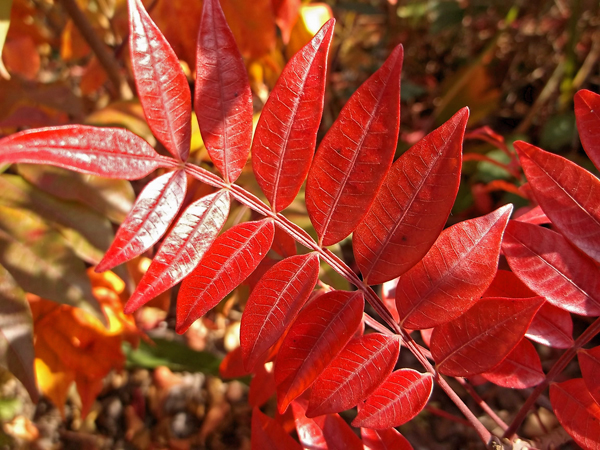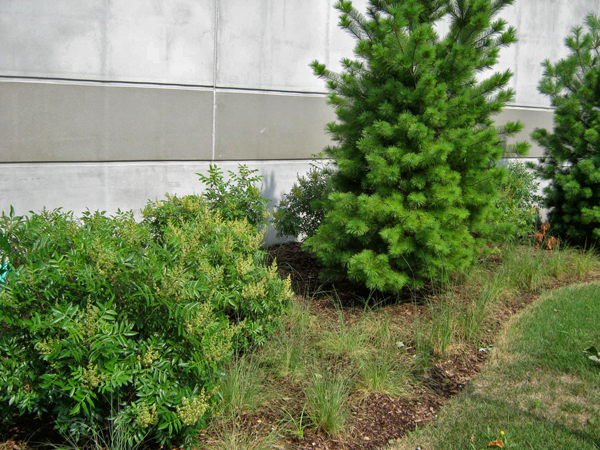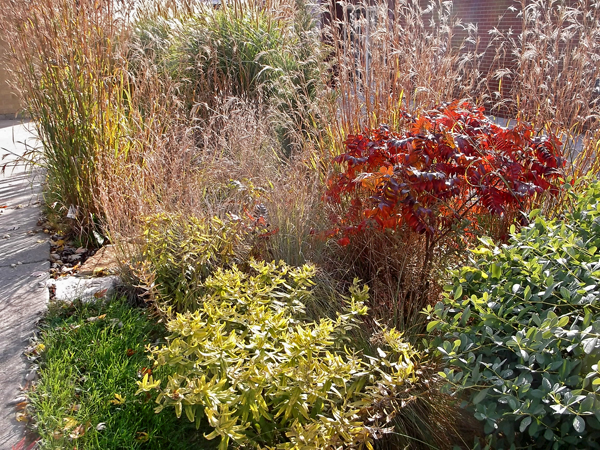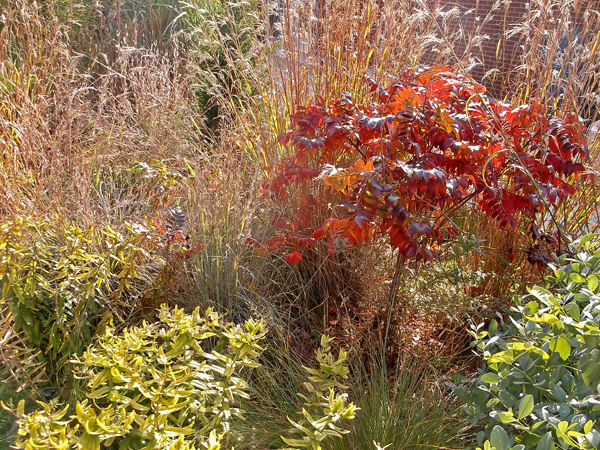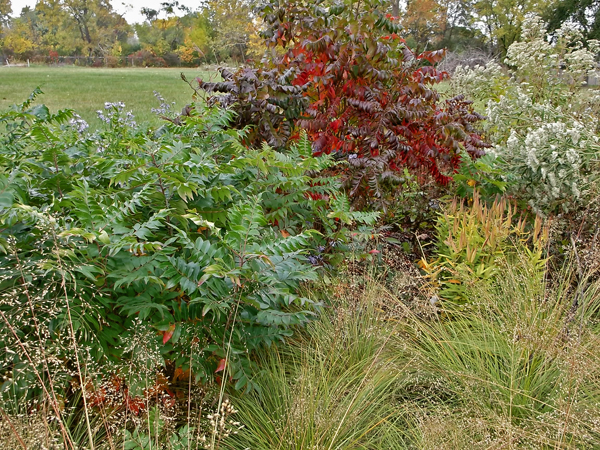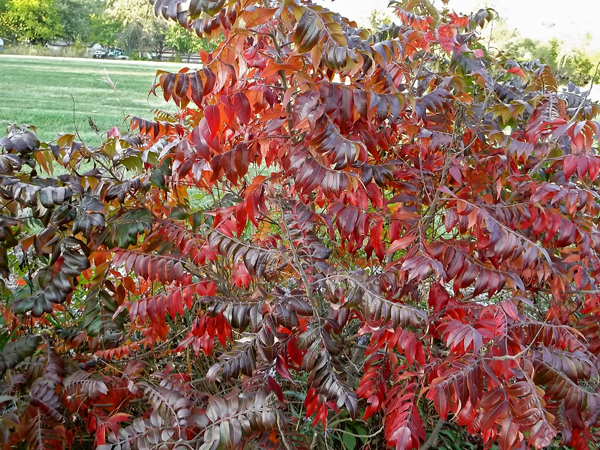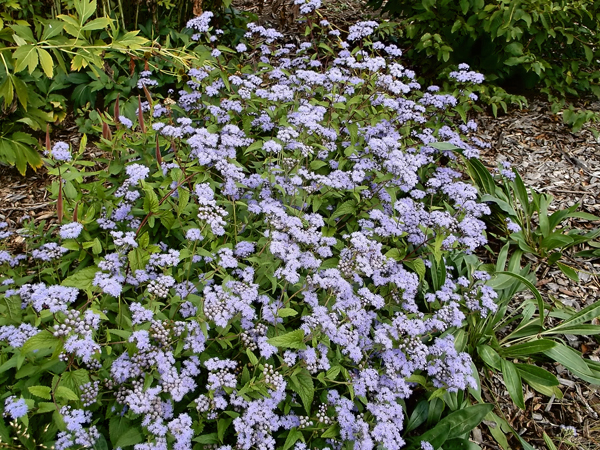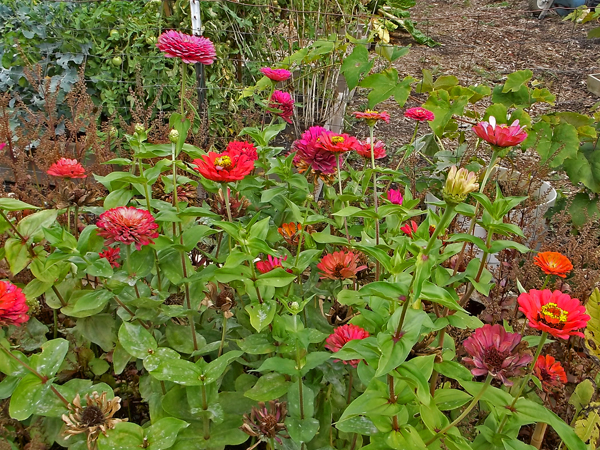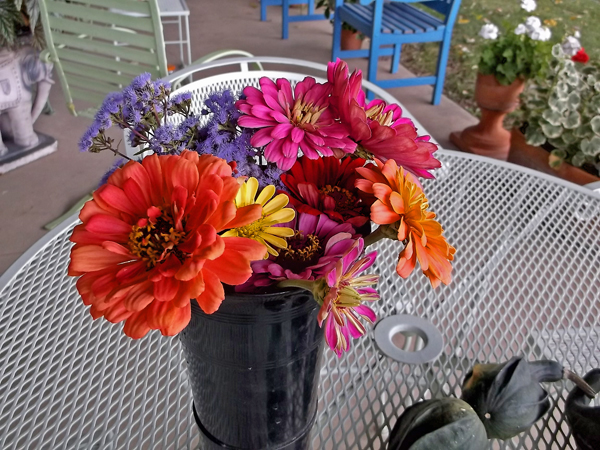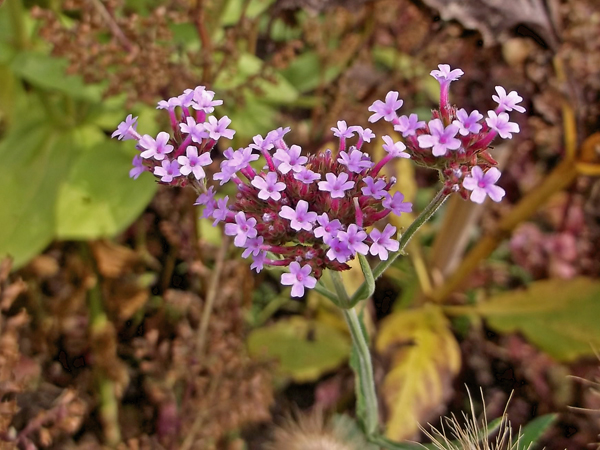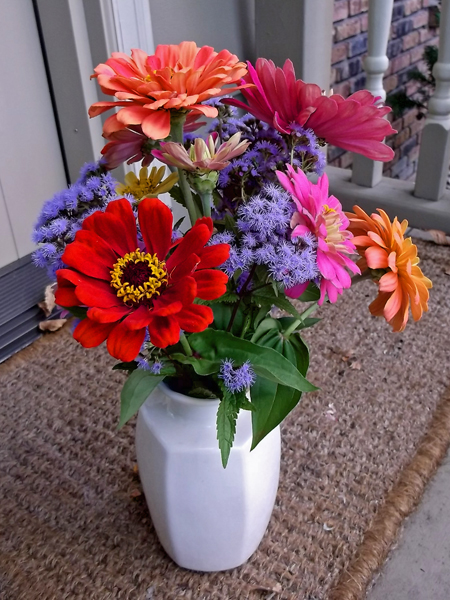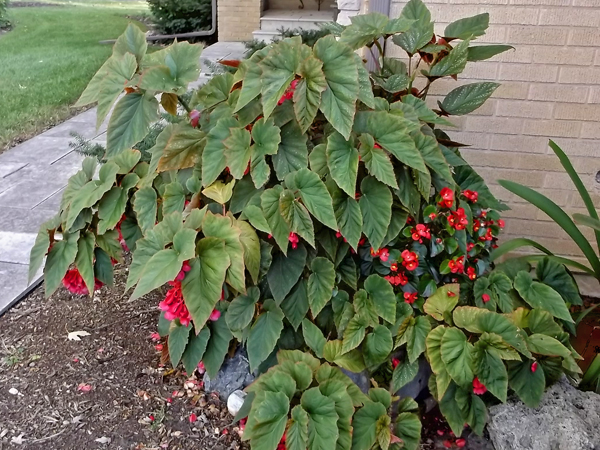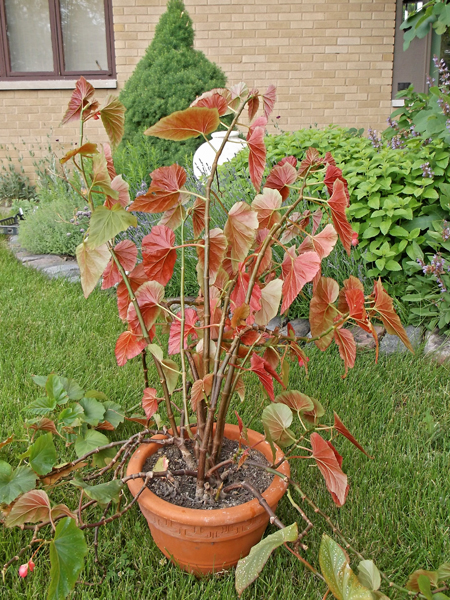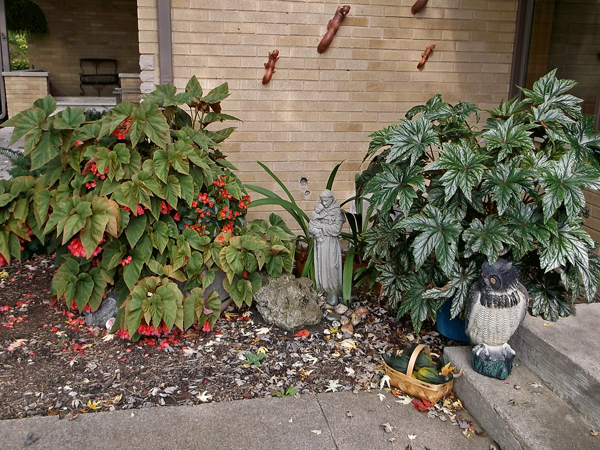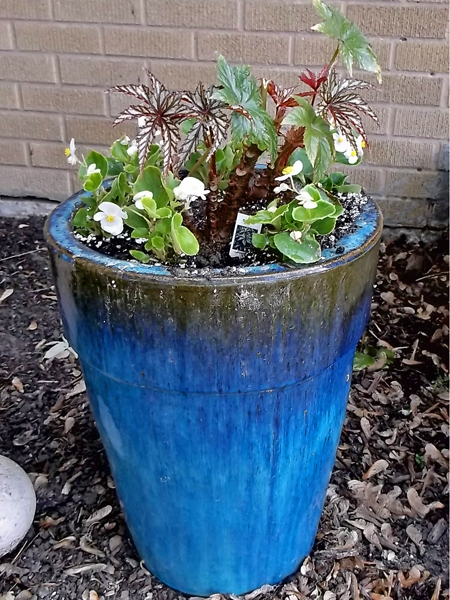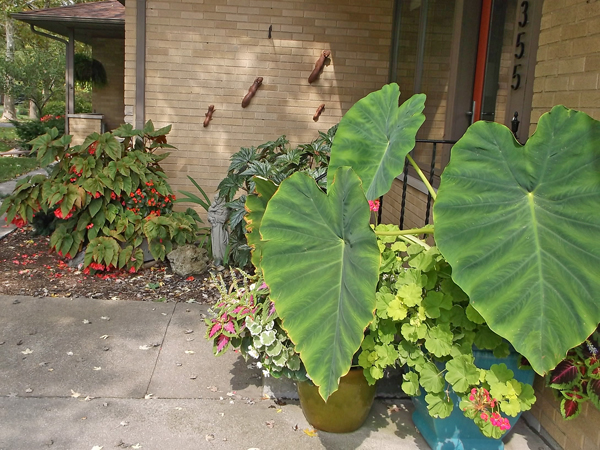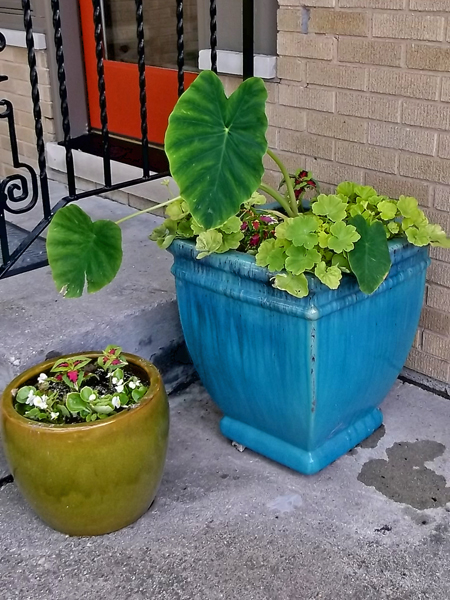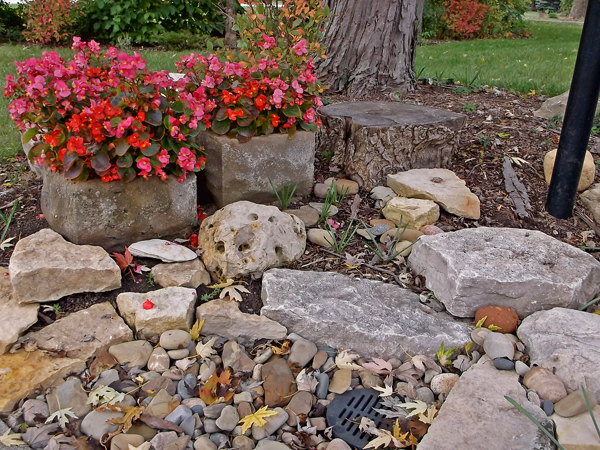I made my first acquaintance with Winged Sumac (Rhus copallina) in the sandy black oak savannas of Kankakee County, Illinois, while helping my friend restore her property. There, they grow along with Smooth Sumac (R. glabra) and are similar in appearance, with the key difference being the wings along the leaf stem, or rachis, and the Winged Sumac’s shiny leaves, which gives this plant its other common name of Shining Sumac. Its branching pattern also seems more elegant and less coarse than the Smooth Sumac – a nice added feature in winter, along with the ornamental qualities of the burgundy seed clusters on the female plants.
And while it is naturally found in poor, sandy soils, I’ve used it in some of my designs along building foundations, as shown above, in place of the more standard planting of Dwarf Burning Bush (an invasive plant, btw). Their requirements are few, but they include at least a half day of sun, and good soil drainage. In this case, the plants, which can get to eight feet or more in height, as will Dwarf Burning Bush, need to be pruned back a bit in early summer so that they do not block the windows. These plants are a dwarf cultivar known as ‘Prairie Flame”
They also look great with other natives as I have used them here with Prairie Dropseed Grass and White Pine which can be seen in the new planting above, with the flowers showing on the Winged Sumac in this July photograph. The grasses will act as a groundcover, the pines will continue to grow to over 75 feet tall, while the sumac will fill in at eye level.
In a wider shot of the planting shown above, some companions used, include Little Bluestem Grass ‘The Blues’, Geranium ‘Rozanne’, as well as other perennials that can take the reflected heat of this western exposure. Anchoring the far corner is a native Serviceberry shrub, along with an occasional Japanese Yew evergreen for added winter greenery on this college campus. In spring, the Servicebery will be covered in small white flowers, followed by tasty blueberry-like fruit.
The bark has an interesting flaking quality, somewhat ornamental, as shown on this mature specimen growing in a suburban front yard. According to A Natural History of Trees, by renowned naturalist, Donald Culross Peattie, the bark is rich in tannin and was used, historically, to cure the finest grade of leather in the American Appalachians.
Growing without competition, this specimen tree has reached approximately eighteen feet tall, and is just beginning to show its fall color of maroon to crimson red.
In my front yard, along the driveway, I have a mixed planting which includes a young Winged Sumac, along with Orange Milkweed (Asclepias tuberosa) in the forground, Blue Baptisia (Baptisia australis) to the right, and Big Bluestem, behind. As the sumac grows, the composition will get even more enchanting. Do you see my neighbor’s garbage cans? I can’t either… now.
In my backyard, I have interplanted the sumac with Smooth Blue Aster (Aster laevis) for a pretty fall combination, as the sumac grows, the aster will fill in below – the white fluffy seed heads behind it are Tall Boneset (Eupatorium altissimum), whose flowers smell of French perfume, but can spread like wildfire in open ground! It is a love hate relationship – mulch can keep the reseeding easily at bay.
As shown below, and quickly realized by anyone who has grown sumac, they sucker – big time. This can be ok, if room allows, but otherwise, the months of June and July will be spent cutting back any unwanted suckers. The sumac showing red below is the mother plant, the ones to the left of it, still green, are its clones. In winter, I’ll decide how many stems I will allow to grow, and cut back the others. Next summer, I’ll continue to cutback any new sprouts to maintain the size of the colony. The planting could be kept to one specimen plant if desired.
The sumacs, are truly and American plant, considering there are no European equivalents. Maybe this is why Frank Lloyd Wright, the father of the Prairie School movement in architecture, used it so often as a motif in his work.
I have never observed any problems with disease or insect damage, however, deer and rabbits are fond of the plants, and can cause damage by browsing. Birds and other wildlife do not tend to favor the seeds, but will go the the persistent seed clusters late in winter, when other food sources are scarce, according to American Wildlife & Plants by Alexander Martin et. al.. And while cutting back the suckers in summer can be a chore, that is about the only care that they require, and the beauty of the plants is more than worth the effort it takes to keep them in bounds.

